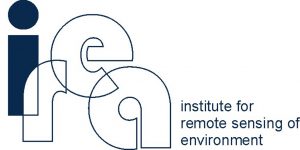EOMAP is leading the consortium. EOMAP is running EO value adding services worldwide for the offshore industry, authorities and in international research projects. The SME EOMAP is a spin-off from the DLR and has huge competence to build a bridge between scientific and non-scientific partners and users. EOMAP brings management experience to the consortium gathered within national and international projects, but also within the EU FP7 downstream project FRESHMON, GlaSS and INFORM as well as from the new H2020 project SPACE-O and BASE-Platform.
CNR is the largest public research institution in Italy and aims to promote, transfer and improve the knowledge in the main sectors of the scientific, technological, economic and social research activities. The CNR institute involved in this project is IREA (Milano) that has been carrying out research studies on remote sensing of lakes since about 30 years. At the end of the nineties IREA coordinated the first European initiative (SALMON, EC FP4-ENV 2C, 1996-1999) to establish remote sensing of lakes as a tool for environmental monitoring. Since then the research group coordinated and/or participated to about 30 national and international projects.
SMHI is a public body under the Swedish Ministry of Environment. SMHI provides decision support to a broad range of end-users, based on meteorology, hydrology, oceanography and climatology information. The institute has a strong RTD focus and a long tradition in operational hydrological modelling, developing customized products and services, as well as 24/7 production of forecasts with early warnings. The hydrological development at SMHI is focused on improvements of the complete chain in nowcast and forecast production, tools for climate change impact assessment, and environmental modelling of water quality fluxes in catchments, rivers, lakes and wetlands. Over the last decade, the main hydrological tool has been the in-house model HYPE, which makes better use of existing spatial information and includes soil processes. The HYPE model is applied with a high resolution over large areas, such as the whole of Sweden, the Arctic, India, the Middle East-North Africa region, and La Plata and Niger River basins, as well as at pan-European and global scales. SMHI is one of the few international actors capable of linking recent scientific progress with operational forecast systems for long-term institutional maintenance.
STUCKY is a leading engineering consultancy specialised in dam and hydropower design, construction and rehabilitation. Stucky’s expertise and experience in dam design has spanned nearly a century and more than 300 large dams, Stucky has been studying the sedimentation management of some the largest dams and reservoirs in the world, alone and in collaboration with experts from Universities such as the Ecole Polytechnique Féderale de Lausanne (EPFL). Stucky previously participated in the FP7 SEDITRANS research project on sediment transport in fluvial, estuarine and coastal environment which study the effects of sediment transport as a cause of morphological changes and the amplification of floods, storm surges and other inundation hazards.
NTNU. The research group hydraulic engineering at the department of civil and environmental engineering (IBM) at NTNU has a long tradition in working on sediment and hydropower related research topics. In particular over the last 10 years have we been contributing to two large research centers, www.cedren.no and www.hydrocen.no. Both these centers are focused on innovation in environmental design of hydro power and on hydropower technology. These centers are research projects over the duration of 8 years, fully funded by the research council of Norway and the hydro power industry. Energy in Norway is produced to almost 99% from hydropower and that is why industry is so much interested in our research. We are contributing to a better understanding of processes, helping to increase the efficiency and to reduce maintenance costs. These two aspects are particularly challenging in areas where the hydropower plants are exposed to high sediment yield. Since 2014 are we active partner in Statkrafts research and development project in Albania. In addition, we have been invited to be part of the newly established International Network in Sediment Management for Hydropower & Dams (HydroSediNet) chaired by the World bank. In HYPOS, NTNU will provide the coupling of suspended sediments at the surface of water bodies to the measured turbidity. The correlation will then be used in the Decision Support Tool (DST) to estimate fluxes and deposition rates. Further, NTNU will be responsible for the user experience evaluation of the developed DST, focus on workshops and strengthen the project dissemination at conferences and other user-oriented activities.




